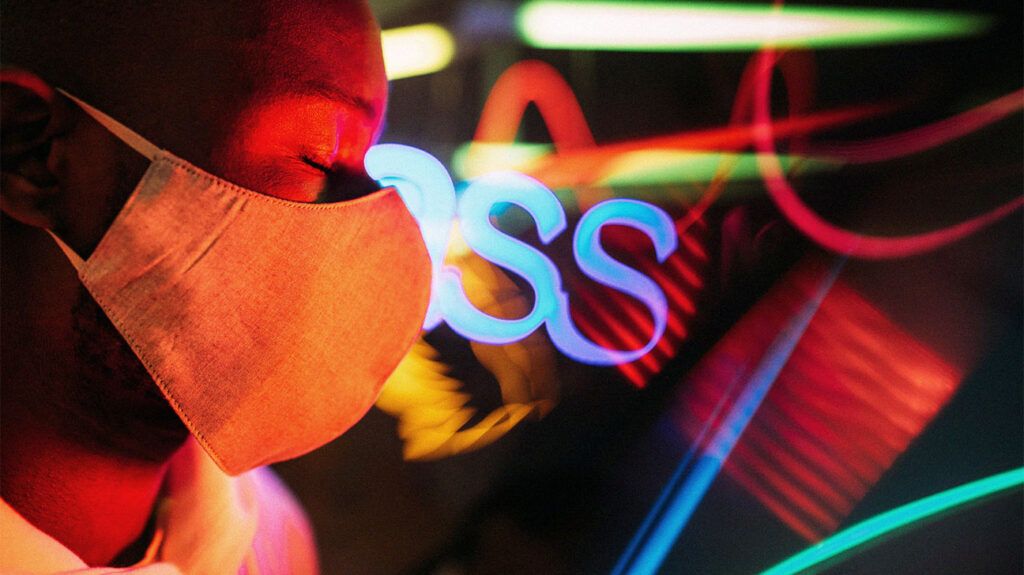
- Brain fog is one of the most debilitating symptoms that people with long COVID experience.
- Some studies have suggested over a fifth of people with long COVID experience it.
- As the symptom is a cognitive one and the mechanism is poorly understood, it is difficult to develop diagnostic tests for it.
- Now, researchers have found that some people with long COVID and brain fog have dysregulated blood-brain barriers that can leak, and dysregulated coagulation, up to 1 year after infection with SARS-CoV-2.
Cognitive impairment lasting more than 3 months affects over a fifth (22%) of people who had an infection with SARS-CoV-2, the virus that causes COVID-19.
Described colloquially as “brain fog”, this symptom — associated with a post-viral condition called “long COVID” — can be debilitating for some people who are affected, but there is little understanding of the mechanisms underpinning it.
Lack of understanding of the mechanisms underpinning these symptoms makes it difficult to both diagnose and treat.
Some of the mechanisms that researchers have suggested contribute to long COVID include microclots, as SARS-CoV-2 appears to affect the lining of blood vessels, and low serotonin that may play a role in brain fog.
Dr. Scott Kaiser, a board-certified geriatrician and director of Geriatric Cognitive Health for the Pacific Neuroscience Institute at Providence Saint John’s Health Center in Santa Monica, CA told Medical News Today:
“Because this is all a relatively new phenomen[on] the overall understanding continues to evolve. There are many potential pathways — reduced oxygen delivery, reduced blood flow, an attack by the immune system on healthy brain cells or an actual invasion of infectious cells into the brain, or inflammation affecting brain cells — and a combination of multiple factors may be at play.“
Now, researchers in Dublin, Ireland have proposed that the blood-brain barrier could be affected in patients with long COVID and cognitive impairment, and that the system that underpins coagulation of the blood could also be disrupted.
They have also proposed a couple of ways this discovery could help with diagnosis. Their findings are published in Nature Neuroscience.
Researchers at St James’s Hospital, Tallaght University Hospital, Trinity College Dublin collected blood and plasma samples from 76 individuals who had COVID-19 in the initial wave of infections in Ireland in March and April 2020.
These samples were compared and contrasted to 25 control samples collected from individuals before the COVID-19 pandemic, meaning these people could not have been affected by SARS-CoV-2.
Samples from people with COVID-19 exhibited a higher level of inflammatory cytokines, markers of blood clotting and endothelial cell activation.
Endothelial cells are a type of cell found in the
Further analysis looked specifically at individuals who experienced brain fog following a SARS-CoV-2 infection. Profiling of their samples showed significantly increased levels of a protein indirectly associated with blood-brain barrier dysfunction, as well as a protein associated with blood clotting.
To further investigate blood-brain barrier function, the researchers recruited 10 people who had recovered from COVID-19 — 11 with long COVID, and 11 with long COVID with brain fog.
Dynamic contrast-enhanced magnetic resonance imaging (DCE-MRI) of the brain showed leakage around the blood-brain barrier in people with long COVID with brain fog, up to a year after initial infection with SARS-CoV-2.
The study authors suggest these findings could point to disruption of the blood-brain barrier playing a role in people with long COVID with brain fog, and DCE-MRI could be used to diagnose this dysfunction in affected individuals.
RNA analysis showed genes associated with a certain type of immune cell, T cells, were upregulated. These play a role in inflammation, and could also point to an underlying mechanism, the authors argued.
Dr. Ziyad Al-Aly Chief of Research and Development at the VA St. Louis Health Care System, who was not involved in the research, told MNT that:
“While it’s possible that certain cases [of brain fog] have very different causes, overall, there does appear to be a clear physiologic pathway by which infection with the [SARS-CoV-2] virus induces an inflammatory response which actually causes inflammation in the brain — neuroinflammation — which can, in turn, […] cause cognitive dysfunction.”
He said that this latest paper supported the idea that “inflammation and vascular injury seem to be key consequences of the infection and these may be mechanistically driving disease manifestations such as brain fog.“
“Not only from this paper but from the body of mechanistic and clinical evidence amassed thus far. It is clear that COVID-19 results in activation of complement system, platelet aggregation and thrombo-inflammation,” he added.
Dr. Kaiser, who was also not involved in the research, cautioned that there is still a lot of uncertainty about the causes of cognitive dysfunction in people with long COVID.
“[T]his study reinforces the idea that the experience of cognitive impairment following COVID is quite frequent and is striking in the extent to which this impairment may persist for many months following infection, even in cases that were not that severe,” he told us.
Dr. Al-Aly said the research could present opportunities to develop biomarkers or diagnostics for patients with long COVID and brain fog.
He said: “I think we are making progress on this, and uncovering key mechanistic pathways (like complement activation); all these present opportunities to develop biomarkers or diagnostics to identify patients. Leaky blood brain barrier could also be identified on imaging. So overall, I think we are certainly getting closer than ever before.”
